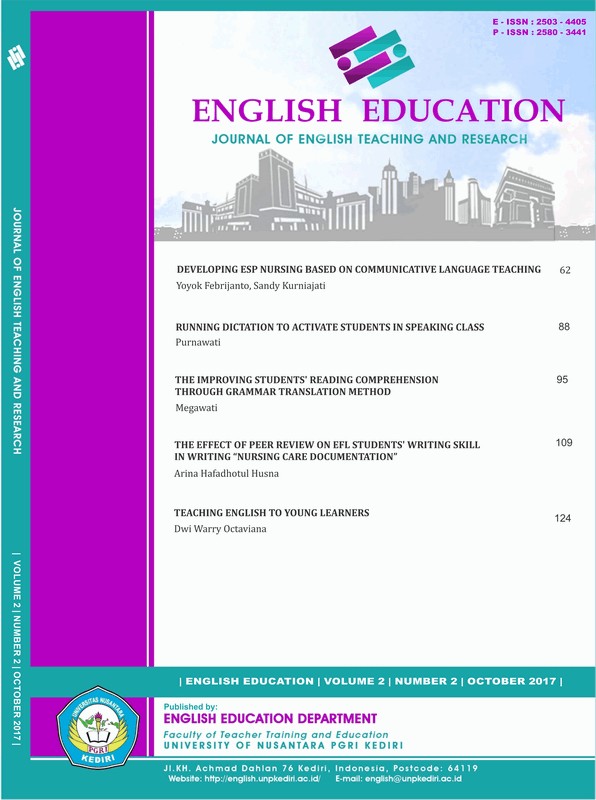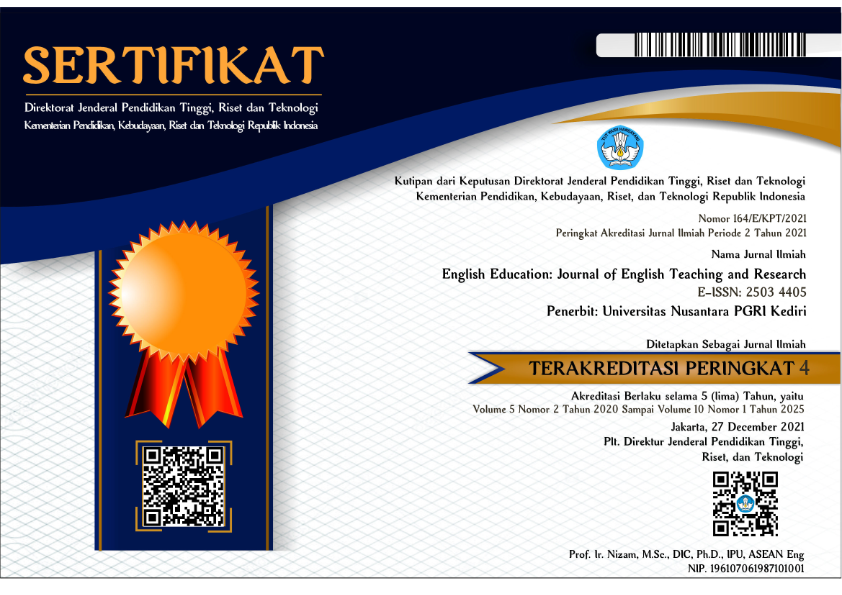RUNNING DICTATION TO ACTIVATE STUDENTS IN SPEAKING CLASS
DOI:
https://doi.org/10.29407/jetar.v2i2.853Abstract
The aim of the teaching of English as a Foreign Language (EFL), particularly at the Junior High School, is to provide the students with the ability to use the target language for communication. It means that students should be able to perform oral communication in conveying and receiving messages in the language in real and natural world. Consequently, EFL teachers should create a classroom atmosphere where students engage in real-life communication, authentic activities, and meaningful tasks that promote oral language production.This paper offers an interesting and interactive activity as so called Running Dictation to activate students in speaking class. Theoritically, the activity is based on the one of the four strands in speaking class that is Language Focused Learning.The activity may lead students to greater independence and interdependence as it requires each student to perform cooperatively and to interact actively with other students in order to finish a task. Above all,this activity will emerge joyful , interesting and challengingatmosphere in Junior High School class as students feel like playing a game while they are learning and as a result can result in promoting better performance in speaking class.
Keywords: running dictation, activate, speaking .
Downloads
Downloads
Published
Issue
Section
License
Authors who publish with this journal agree to the following terms:
- Copyright on any article is retained by the author(s).
- The author grants the journal, the right of first publication with the work simultaneously licensed under a Creative Commons Attribution License that allows others to share the work with an acknowledgment of the work’s authorship and initial publication in this journal.
- Authors are able to enter into separate, additional contractual arrangements for the non-exclusive distribution of the journal’s published version of the work (e.g., post it to an institutional repository or publish it in a book), with an acknowledgment of its initial publication in this journal.
- Authors are permitted and encouraged to post their work online (e.g., in institutional repositories or on their website) prior to and during the submission process, as it can lead to productive exchanges, as well as earlier and greater citation of published work.
- The article and any associated published material is distributed under the Creative Commons Attribution-ShareAlike 4.0 International License








 Article template
Article template



